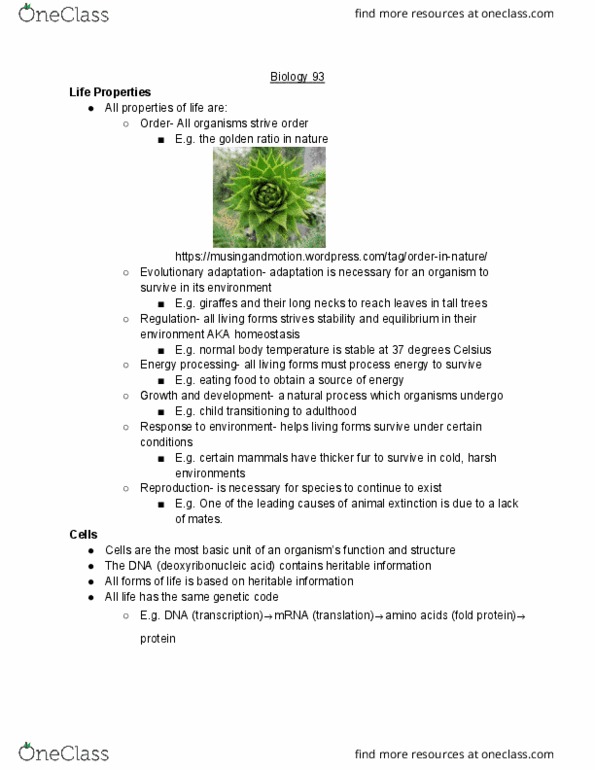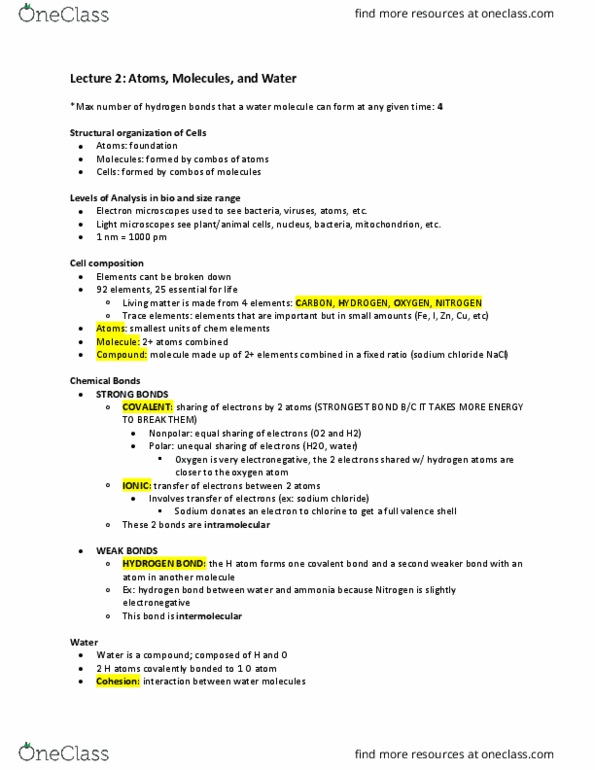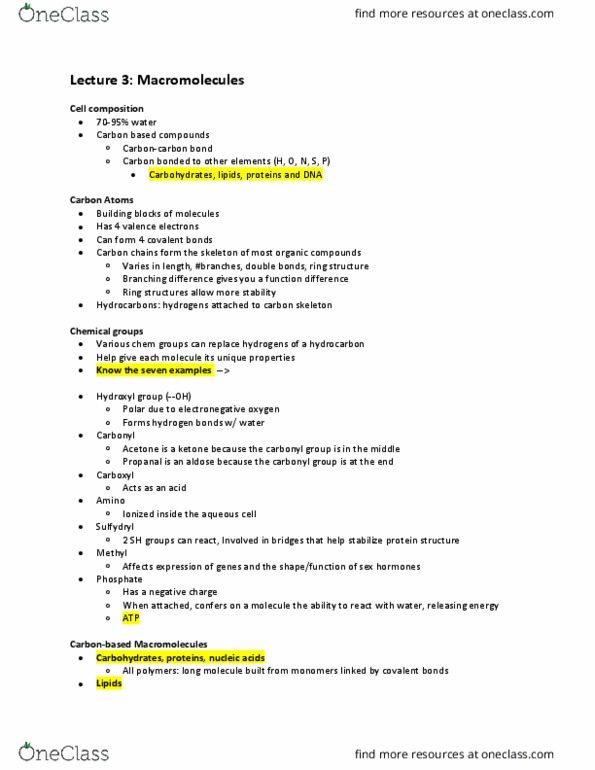BIO SCI 93 Lecture 2: Lecture 2: Atoms, Molecules, and Water
BIO SCI 93 verified notes
2/31View all
Document Summary
*max number of hydrogen bonds that a water molecule can form at any given time: 4. Structural organization of cells: atoms: foundation, molecules: formed by combos of atoms, cells: formed by combos of molecules. Levels of analysis in bio and size range: electron microscopes used to see bacteria, viruses, atoms, etc, 1 nm = 1000 pm. Light microscopes see plant/animal cells, nucleus, bacteria, mitochondrion, etc. Strong bonds: covalent: sharing of electrons by 2 atoms (strongest bond b/c it takes more energy. To break them: nonpolar: equal sharing of electrons (o2 and h2, polar: unequal sharing of electrons (h2o, water, oxygen is very electronegative, the 2 electrons shared w/ hydrogen atoms are closer to the oxygen atom. Water: water is a compound; composed of h and o, 2 h atoms covalently bonded to 1 o atom, cohesion: interaction between water molecules, critical for plants to take up water.




